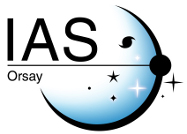Far-infrared constraints on the contamination by dust-obscured galaxies of high-z dropout searches
| Title | Far-infrared constraints on the contamination by dust-obscured galaxies of high-z dropout searches |
| Publication Type | Journal Article |
| Year of Publication | 2011 |
| Authors | Boone, F, Schaerer, D, Pello, R, Lutz, D, Weiss, A, Egami, E, Smail, I, Rex, M, Rawle, T, Ivison, R, Laporte, N, Beelen, A, Combes, F, Blain, AW, Richard, J, Kneib, JP, Zamojski, M, Dessauges-Zavadsky, M, Altieri, B, van der Werf, P, Swinbank, M, Perez-Gonzalez, PG, Clement, B, Nordon, R, Magnelli, B, Menten, KM |
| Journal | Astronomy & Astrophysics |
| Volume | 534 |
| Date Published | Oct |
| ISBN Number | 0004-6361 |
| Accession Number | WOS:000296554800084 |
| Abstract | The spectral energy distributions (SED) of dusty galaxies at intermediate redshift may look similar to very high-redshift galaxies in the optical/near infrared (NIR) domain. This can lead to the contamination of high-redshift galaxy searches based on broad-band optical/NIR photometry by lower redshift dusty galaxies because both kind of galaxies cannot be distinguished. The contamination rate could be as high as 50%. This work shows how the far-infrared (FIR) domain can help to recognize likely low-z interlopers in an optical/NIR search for high-z galaxies. We analyze the FIR SEDs of two galaxies that are proposed to be very high-redshift (z > 7) dropout candidates based on deep Hawk-I/VLT observations. The FIR SEDs are sampled with PACS/Herschel at 100 and 160 mu m, with SPIRE/Herschel at 250, 350 and 500 mu m and with LABOCA/APEX at 870 mu m. We find that redshifts > 7 would imply extreme FIR SEDs (with dust temperatures > 100K and FIR luminosities > 10(13) L-circle dot). At z similar to 2, instead, the SEDs of both sources would be compatible with those of typical ultra luminous infrared galaxies or submillimeter galaxies. Considering all available data for these sources from visible to FIR we re-estimate the redshifts and find z similar to 1.6-2.5. Owing to the strong spectral breaks observed in these galaxies, standard templates from the literature fail to reproduce the visible-to-near-IR part of the SEDs even when additional extinction is included. These sources strongly resemble dust-obscured galaxies selected in Spitzer observations with extreme visible-to-FIR colors, and the galaxy GN10 at z = 4. Galaxies with similar SEDs could contaminate other high-redshift surveys. |



